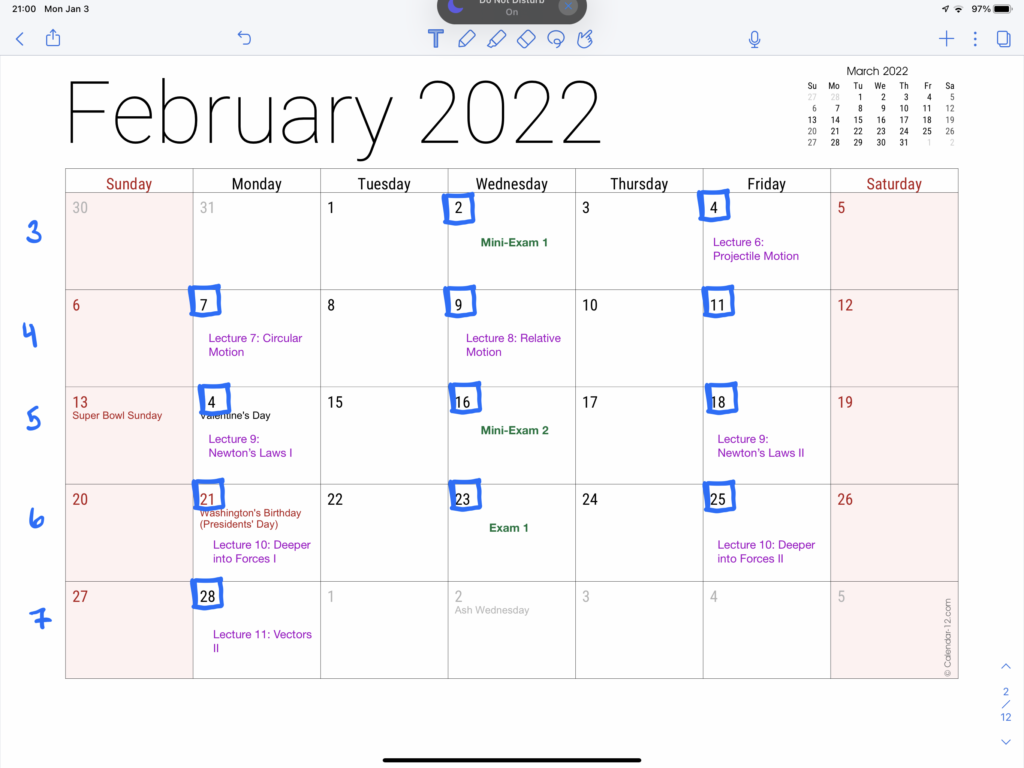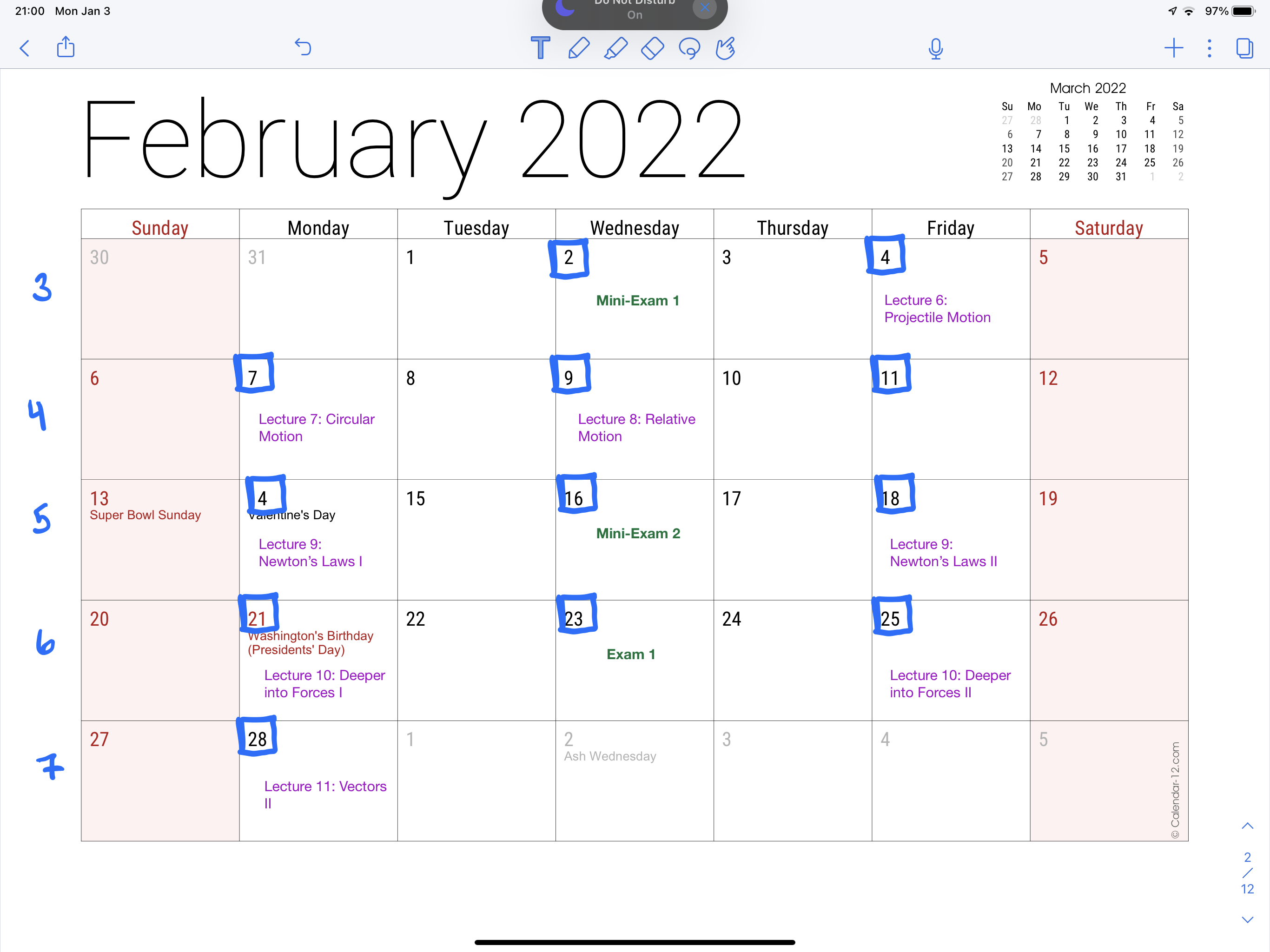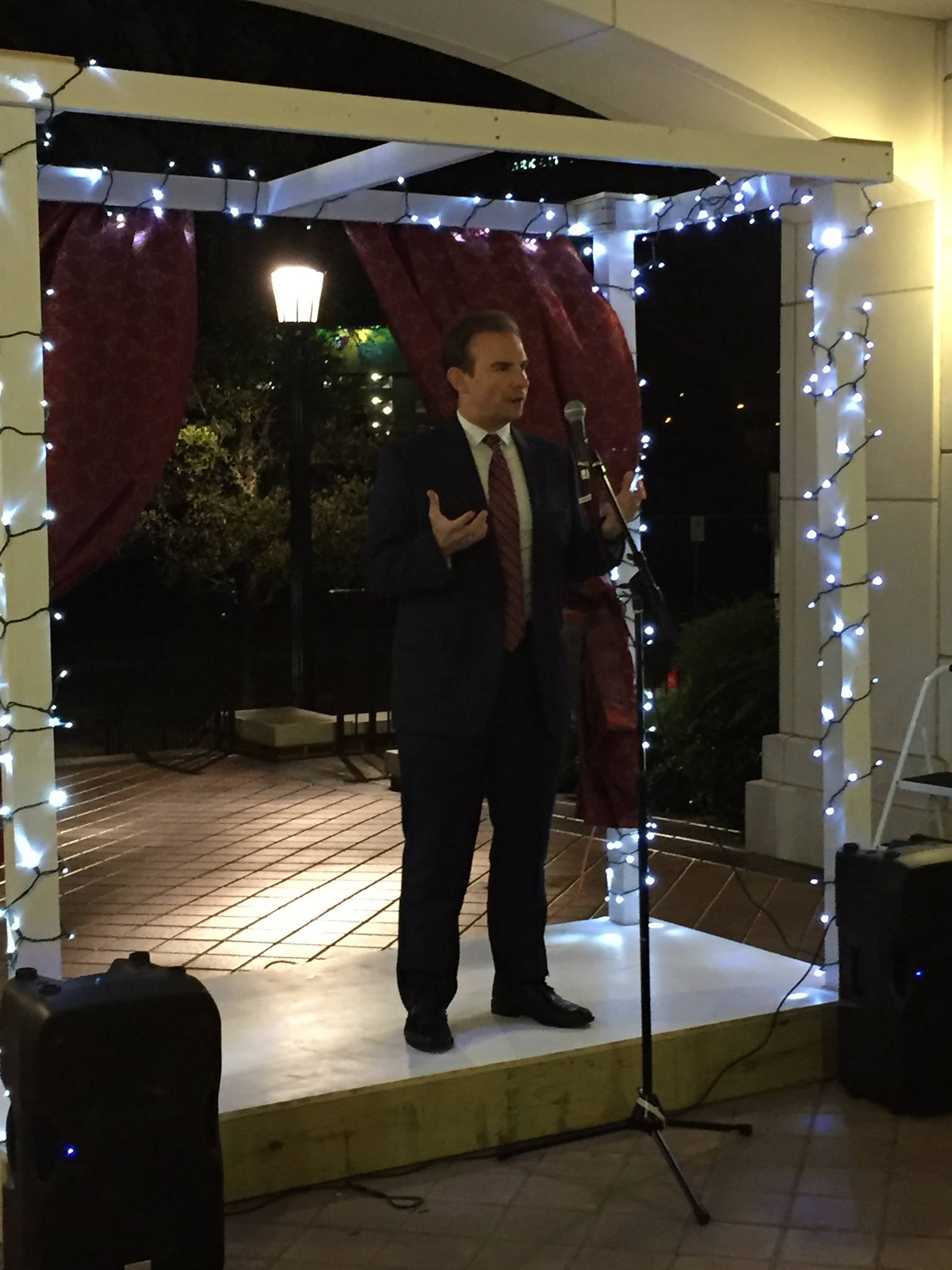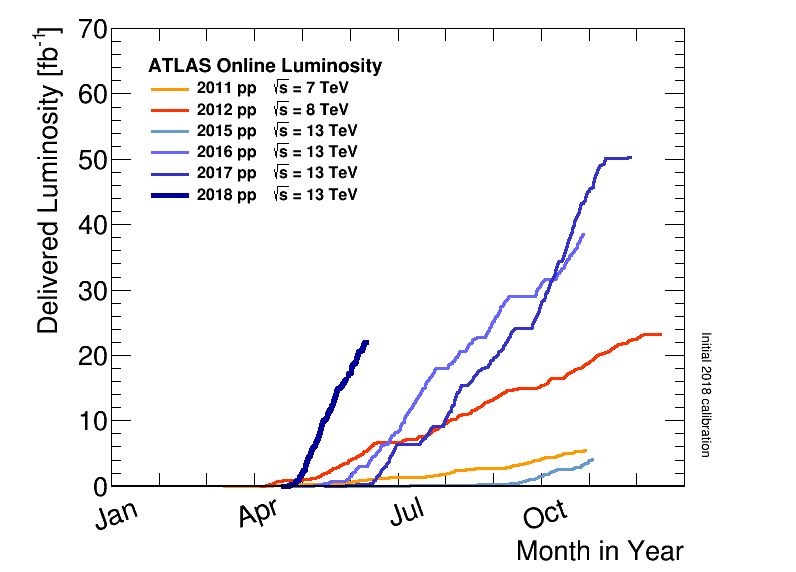Today was the first day “back at work” for 2022. I put “back at work” in quotes because I was working, but I did not go into the office. There is no need. Right now, we are still between terms. It’s not like the hallways of my building are teeming with colleagues, and those who are there are there for a reason: teaching for the inter-term (called “J-term” at SMU) or research. In either case my colleagues are not lurking around – they are in their spaces, like the classroom or a research laboratory. They don’t need me bugging them.
Besides, COVID-19 is burning like wildfire through the region and there is no reason to make oneself an unnecessary host for that virus. As a computational physicist, I can do my work remotely. So there was no reason to go into the office. Freed from wasting time in the commute, I set one major concrete goal for today: lay out my entire introductory physics course with its new sequence of topics and new days of the week.
I set other goals, as well, and the list is here in a tweet:
Logging into email was more treacherous than it sounds; I had to reset my password a week ago and I had actually almost forgotten what it was. With that problem resolved, I was able to then get some “Inbox Zero” action going. “Zero” here is defined not as “no messages left in my inbox” but rather “no important email that needs action remaining in an un-acted state.“
I then turned my attention to my start-of-year letter to my faculty. This covered what we know and don’t know about COVID classroom policies for Spring 2022, the shortage of teaching assistants (most graduate students this term will be conducting research), and staffing in the department main office. Most of these are unresolved issues, but a status report was definitely in order.
I filled out some forms that needed finishing and sent some matters to the Dean for consideration. Those weren’t on the list, but needed to be done.
Then it was time for lunch. That left the afternoon free to focus on the big item: laying out my introductory physics course.
This is a bigger deal than it seems. I’ve taught it many times, but always on Tuesdays and Thursdays (TTH). Now I am, for the first time, on a Monday, Wednesday, Friday schedule. TTH classes get 80 minutes per period; MWF classes get 50 minutes per period. On a per week basis, that amounts to 10 minutes less of instruction time for MWF classes (it all works out across the semester, but it feels like a short-fall each week).
This meant not only thinking about how to redistribute material, but also how to place in mini-exams (short 15-20 minute exams that happen 5 times during the semester) and exams (three during the term). Mini-exams are unchanged from the last time I used this instrument, but exams will now be reduced from 80 to 50 minute affairs.
I sat down with a blank calendar and a few other things: the SMU academic calendar, the new order of topics for this course (that changed in November), and my YouTube playlist of lecture videos. The videos are assigned before students come to class; class is reserved for learning to setup and solve problems and to exercise concepts. There are fewer videos than class periods because some videos are long, cover a lot of material, and are split over multiple assignments.
The new order of topics was pretty straight forward. Gravitation is now moved to the last week of the term. It used to be earlier, but since it can stand on its own it was moved to the very end. That was the major change. Easy!
I then started thinking about how to organize the course. Wednesday becomes the “focal day” for a given week. On any given Wednesday, one of three things will happen: homework will be due, a mini-exam will be scheduled, or a full exam will be scheduled. Monday will be spend with me demonstrating how to apply concepts to solve an example problem and then getting students working on their own problems. Wednesday we continue the student activity period, and then close with me showing how to setup and solve an example problem on the next batch of material. Fridays will be student-driven problem-solving days, primarily devoted to students solving problems and with emphasis on interactive demonstrations. When an exam falls on a Wednesday, the Wednesday activities will be shuffled to Friday.

With that in mind, it was time to lay out the calendar. This actually went fairly smoothly, all things considered. Once I know HOW I want to structure a course, its easy to then lay it out on a schedule. I even found one day at the very end for “special topics,” a lecture whose content the students will select.
Not a bad first day back at work. I even finished by posting the “teaser trailer” for my introductory physics course, which will be themed around “Star Trek” this time.




